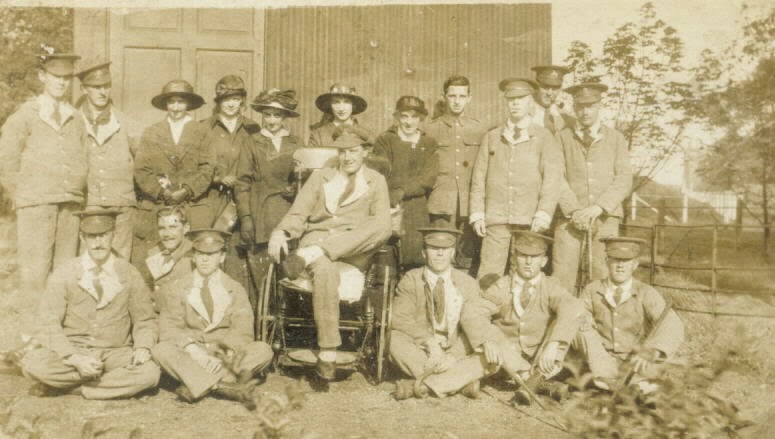Let me introduce you to Jay Kroll. He lives in Sheboygan, Wisconsin, and just last week he contacted me via email. He happened to stumble across my JD's Jottings blog and I quote, "found it very interesting, informative and overall enjoyable. Good work.." Wowsers! That was nice to hear. I must say I was flattered, and somewhat surprised since most of my jottings came about rather spontaneously, and did not involve a lot of planning and forethought. I usually just sat down, picked out a picture and wrote about it. Thank you, Jay, for the compliment. That makes me happy.
Here's the thing. Jay is also a genealogist and family historian. He can't get enough of it. In his own words, he is a genealogy addict. I understand completely. Best of all, however, is (remember, his name is Jay KROLL, he is a 3rd cousin. My Grandma Haubrich was a Kroll. Her Dad, my great grandfather and Jay's great grandfather were brothers. Jay was kind enough to send me a file of his Kroll research and is is loaded with good stuff I didn't have. We plan to meet sometime in the near future.
I am very grateful for this unexpected contact and new acquaintance, for obvious reasons. But it is also helpful to me since it gave me a (re)-starting place as I hope to be able to spend a lot more time now on this good stuff in retirement. Jay is clearly a lot more polished, organized, and professional than I am, but I hope that our meeting with be of mutual benefit.
Anyway, about the KROLLS OF SHEBOYGAN:
Let me share with you one of my favorite pictures. I don't remember exactly when, but I do remember how excited I was when I found it, or it found me. (You see, I don't document very well!) It is the earliest photo we have of Grandma Haubrich, probably late 1888. It became the starting point for my Kroll family research. I knew who all the people were, but I wanted to learn all about them and what happened to them. There are lots of pictures too!
It a great place to make this fresh start in my family history research. Fred (Friedrich) Kroll and Anna (Thielmann) came to Sheboygan in 1873 from what was called Royal Prussia. Like many other like-immigrants, there is nothing especially unique and special about their life, but at the same time, like many other like-immigrants, their life is fascinating and amazingly interesting to people like me. I'll have more to say about that.
As for their children, there were seven, five of who survived into adulthood. Each one is a story in itself. Gustav is the oldest and became a career army man, serving from the Spanish-American War years, through WWI, and into the 1920s. He spent time in Prescott, AZ at Fort Whipple (been there) and settled in San Antonio, TX. He married a local girl of Mexican descent. Both are buried in Sam Houston National Cemetery.
Fred Jr stayed in the Sheboygan area his entire life. The Fred Krolls and the Haubrichs of Kenosha spent quite a bit of time together, the one visiting the other back and forth over the years. Fred married a Dutch gal and they had one son who died in his 20's.
Emma was the oldest daughter. She ended up marrying a Kenosha man, Fred Lorenz and their home became the hub of sorts for the Kroll/Haubrich family into the 1940s. Another of my favorite series of pictures , which I will share sometime, were taken on their back porch. I have had an email contact with one of her granddaughters who now lives in Texas and has some of the same pictures I have.
Emilie is my grandma and this is where the Haubrich family meets the Krolls. I could write a book about her. She lived with us for several years in Zion and died at the hospital in Waukegan. I will never forget carrying her frail body down the front stairs of the house on Elizabeth Avenue that day. I have a tape recording of her talking about her mom and dad and living in Sheboygan. She was an interesting lady.
Finally, there's Bertha. She married Grandpa Haubrich's younger brother Adolph, moved to Phoenix in the late teens because of his poor health, and died there while only in his late 30s. Bertha and her three children moved back to Kenosha. She lived as a widow for almost 45 years. We remember her best as living with her cousin, Elvira Lorenz, in a cute little house in Kenosha. Daughter Betty Jean still lives in Kenosha today. (Which reminds me, I need to call her.)
Yikes - I was going to make this a short one. Oh well. There you have it. Hopefully, I'll have more to share soon. Thanks, Jay Kroll. My house now is right on Hwy 23 in Montello and if you take that east you will drive into Lake Michigan in Sheboygan. So, I guess all roads do lead there, at least mine will, for a while anyway.







.JPG)
.jpg)


.png)
.png)

%2B(Ljungberg)%2BDolan.jpg)
.bmp)


.jpg)




















.jpg)


